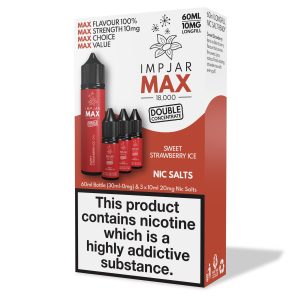Vaping
vaping /ˈveɪpɪŋ/ noun
The action or practice of inhaling and exhaling vapour containing nicotine and flavouring produced by a device designed for this purpose. “vaping the less harmful alternative to smoking”
Vape Club from WhiteVapeco
WhiteVapeCo has an exclusive club which offers its members exciting offers and discounts as well as pre-realises on new juice and products so you can get them before anyone else.
Vape Club from WhiteVapeco
WhiteVapeCo has an exclusive club with offers for its members, exciting offers including club only discounts and pre-realises on new juice and products so you can get them before anyone else.
Who invented vaping
Where did it all start, who is responsible for the creation of vape pens and when was the first vape device realised, you may get a surprise as they are not as new as you think.
Vaping vs smoking
A question many have thought about, and if you have, you will be interested to understand. many of the benefits vaping can bring to your life, including; fewer chemicals, non-smelly hair and clothes, no ash and best of all cheaper.
-
Need to know more?
- Vaping vs. Smoking: Which is Better?
- Comparing Vaping to Smoking:
- Will vaping help me stop smoking
- Vaping vs cigarettes cost
- Can you still get cancer from vaping
- Are vapes better than fags (smoking)
- Do people who vape go back to smoking
- Does vaping make your clothes smell
- Do people who vape smoke cigarettes too
Disposable vs Mods
Disposable vapes and vape mods represent two distinct categories within the vaping industry, each offering unique benefits and drawbacks.
- Disposable vapes 101
- Vape Mod Devices 101
- What vape device is right for me
- Are vape mods for expert vapers
- Vape starter kits for beginners
- How long do disposable vapes last?
- Can you recycle disposable vape devices
- Do you have to buy a battery for mods
- Can you change the tank on mods
- How many puffs do you get from a disposable vape pen
Vape Pods
Vape pod devices have become increasingly popular among vapers for their compact size, simplicity, and user-friendly design. These devices typically consist of two main components: a battery (or mod) and a pod filled with e-liquid.
Nicotine Salts
Nic salts gained popularity in the vaping community due to their ability to provide quick and efficient nicotine delivery. Unlike freebase nicotine, which can be harsh on the throat at high concentrations, nic salts offer a smoother throat hit even at higher nicotine levels. This makes them particularly appealing to heavy smokers or those transitioning from smoking to vaping.
E-liquid or Vape Juice
“E-liquid” and “vape juice” are terms used interchangeably to describe the liquid solution used in electronic cigarettes (e-cigarettes) or vape devices. This solution typically contains a mixture of propylene glycol (PG), vegetable glycerin (VG), flavourings, and nicotine (although some e-liquids are nicotine-free).
